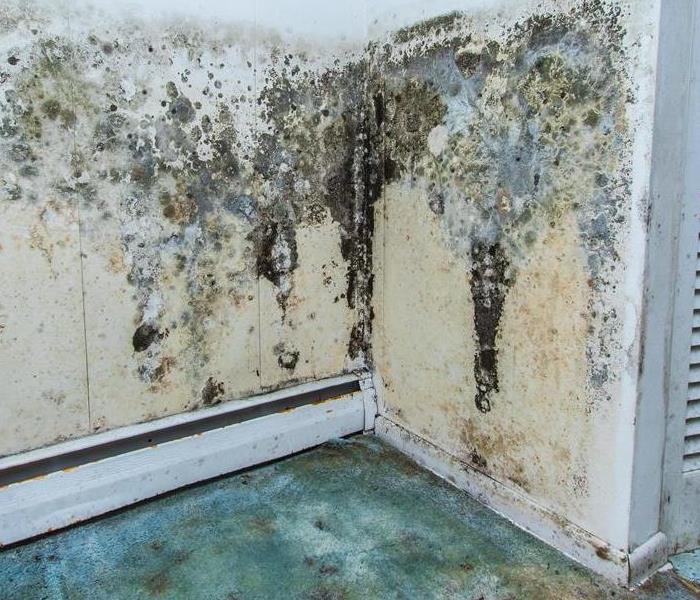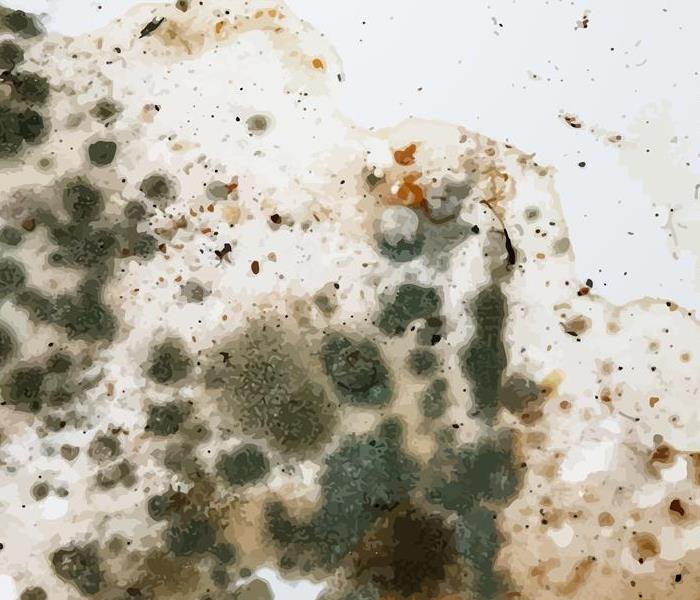The Hidden Dangers of Mold: Protecting Your Home and Family
10/31/2023 (Permalink)
Mold is a common household issue that can spread rapidly if not addressed promptly. In this blog, we will explore how mold spreads. Understanding the causes and mechanisms of mold spread can help you take proactive measures to prevent its growth and maintain a clean and healthy living environment. Mold can spread in the air, moisture and humidity, contamination, and improper ventilation.
Mold Spores in the Air
Mold spreads through tiny, lightweight spores that are present in the air both indoors and outdoors. These spores are microscopic and can enter your home through open doors, windows, or through ventilation systems. Once inside, they can settle on various surfaces and begin to multiply in the presence of moisture. Even if mold is not visible, the presence of spores means there is a potential for growth. Therefore, it is crucial to control the levels of moisture in your home to minimize the likelihood of mold spores germinating and spreading.
Moisture and Humidity
The primary factor that contributes to mold growth and spread is moisture. Mold requires a damp environment to thrive and reproduce. Excessive humidity, water leaks, condensation, or floods provide the necessary conditions for mold to grow and spread. Once mold colonies have established, they can release more spores into the air, increasing the chances of further contamination. Addressing any sources of moisture, such as leaks or high humidity levels, is crucial in preventing mold spread and growth.
Contamination Through Touch
Mold can also spread through direct contact. If you touch or disturb mold-affected materials or surfaces, mold spores can become airborne and settle in other areas of your home. For example, if you brush against mold-infested walls, furniture, or fabrics, you could unknowingly transfer the spores to unaffected areas. It is important to be cautious while handling materials contaminated with mold and avoid spreading the spores to clean areas. Proper containment and disposal methods should be followed when dealing with mold-infested materials to prevent further contamination.
Improper Ventilation and Air Circulation
Inadequate ventilation and poor air circulation can contribute to mold growth and spread. Stagnant air creates pockets of high humidity, particularly in areas such as bathrooms, kitchens, or basements. Without proper airflow, these areas become breeding grounds for mold. By promoting proper ventilation and airflow throughout your home, you can help prevent the buildup of moisture and minimize the chances of mold growth and spread.
Understanding the mechanisms by which mold spreads allows you to take proactive measures to prevent its growth and spread. By controlling moisture levels, addressing leaks or high humidity, practicing careful handling of mold-affected materials, and promoting proper ventilation, you can reduce the likelihood of mold spreading and maintain a clean and mold-free living environment.



 24/7 Emergency Service
24/7 Emergency Service

